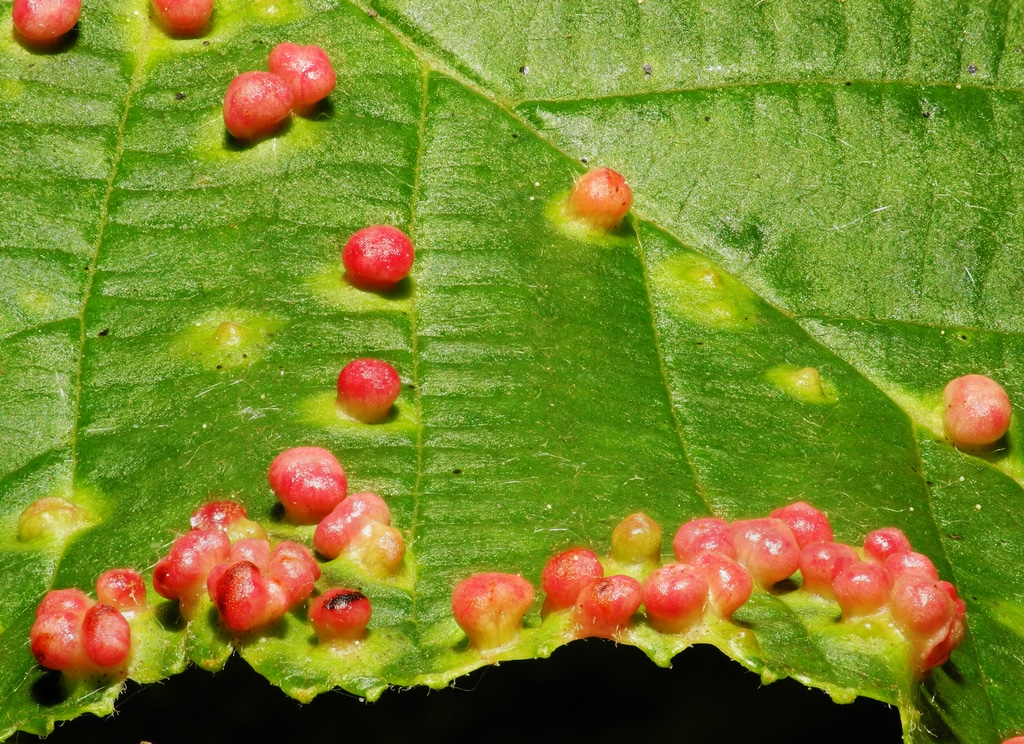
Maine Audubon regularly features posts by guest authors as part of our Maine’s Naturalist series. If you’d like to explore contributing a post about Maine wildlife, send an email to media@maineaudubon.org. Today’s post is from Polly Haight Frawley, 2019 graduate of the Maine Master Naturalist program.
While you might think of a gall as an aberrant growth (and you would not be wrong) we should appreciate galls for their contribution to the variety of plants that occur.
A gall is a discrete structure found on a plant that is an alteration of the plant’s normal growth. It is caused by a living agent alien to the plant, which could be a virus, fungus, insect, bacteria or specialized mite. The invader, so to speak, damages the plant causing normal plant growth to react and develop a new form of growth that would not be there were it not for the invading species. For example, an insect’s saliva on a plant leaf or stem puts the plant’s cells into overdrive resulting in a unique structure. There are 1500 species of gall producers, the majority of which are insects or mites.
Galls usually form in spring during the accelerated growth of the plant (i.e., leaves, shoots and flowers) and are often most visible in late summer by which time the larvae/parasites are fully embedded.
At this time of year some common galls that you may notice are the following:
Black knot is a rough, black growth frequently found on cherry, plum and other trees of the Prunus Family. It is a fungal disease caused by the pathogen Apiosporina morbosa. Its spores are spread by wind and rain. While it first appears as an olive shaded covering over the course of two years the gall causes the wood to morph into a dark wooden tumor, often a host for insects. As the gall continues to grow it can choke off growth in the leaves beyond the gall. While it not does not normally stop growth on the trunk it can crack the trunk letting in other wood rotting fungi.
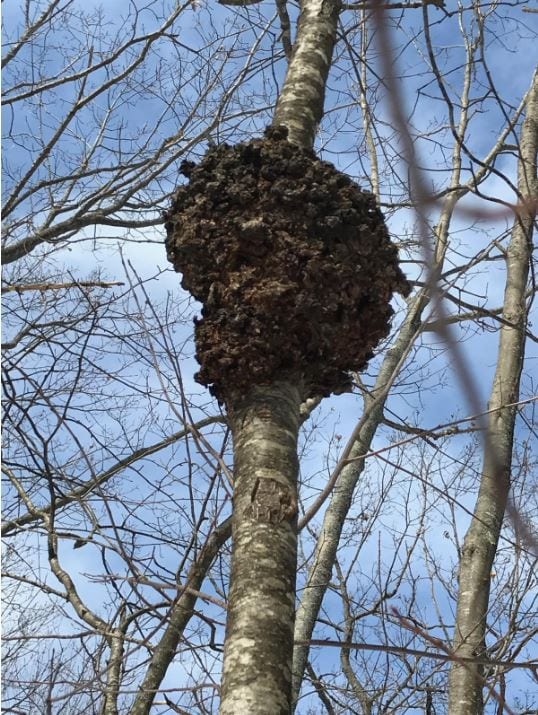
Small finger galls can be found on leaves of many trees including ash, elm and cherry. Maple leaves can host similar structures, the bladder gall and the spindle gall. These types of galls are caused by specialized mites. Leaf galls rarely damage the tree other than causing premature leaf drop.
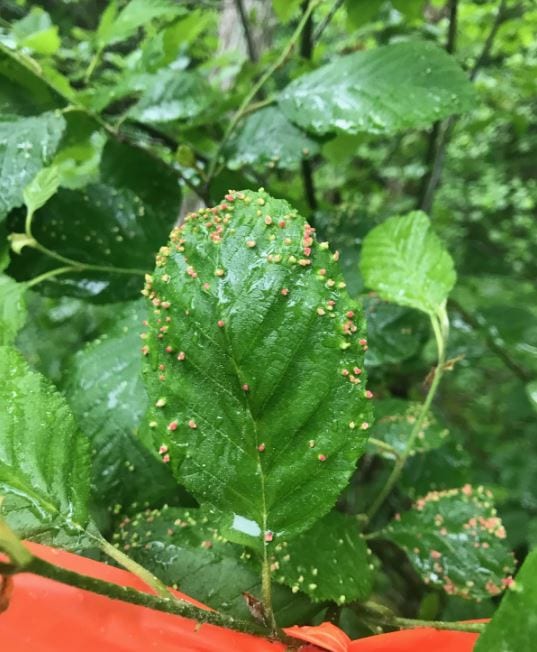
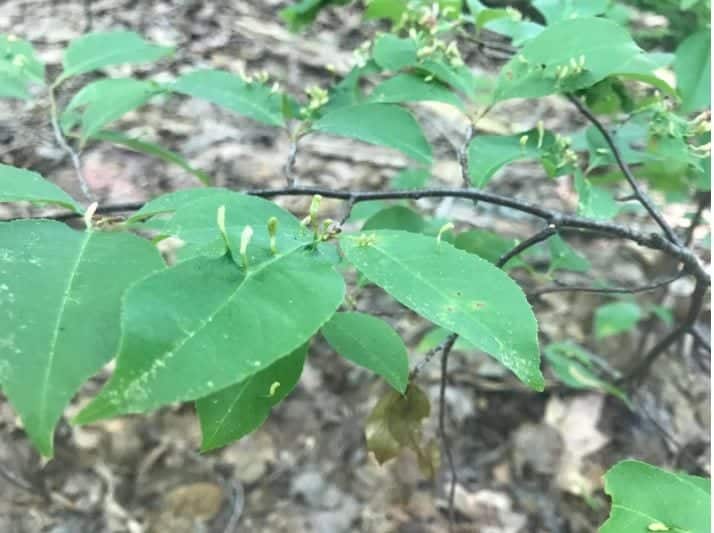
The witches’ broom gall is aptly named. It can appear in deciduous and coniferous trees. The largest are very dense, consisting of a profusion of fairly straight but branch- like twigs growing from the host tree. The growth of a lateral bud – the buds that make twigs and side shoots – loses control and causes multiple stems to form in a tangled, disorganized manner. Multiple years of growth are required to create big brooms. There are several causes of witches’ broom namely fungal, viral or bacterial activity, and occasionally insect activity. Normally the gall does not damage the tree.The witches’ broom in the photo below is on a high bush blueberry.
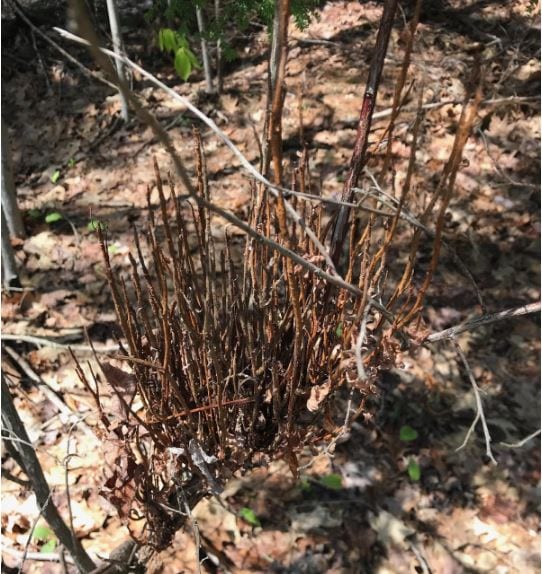
Finally, you may see the goldenrod ball gall common in the Northeast. As the goldenrod stops flowering and starts to decline, ball-shaped swellings may appear on some of the stems. These spherical swellings are produced by the goldenrod gall fly, Eurosta solidagnis. This tephritid fly completes its entire life cycle only on goldenrod.
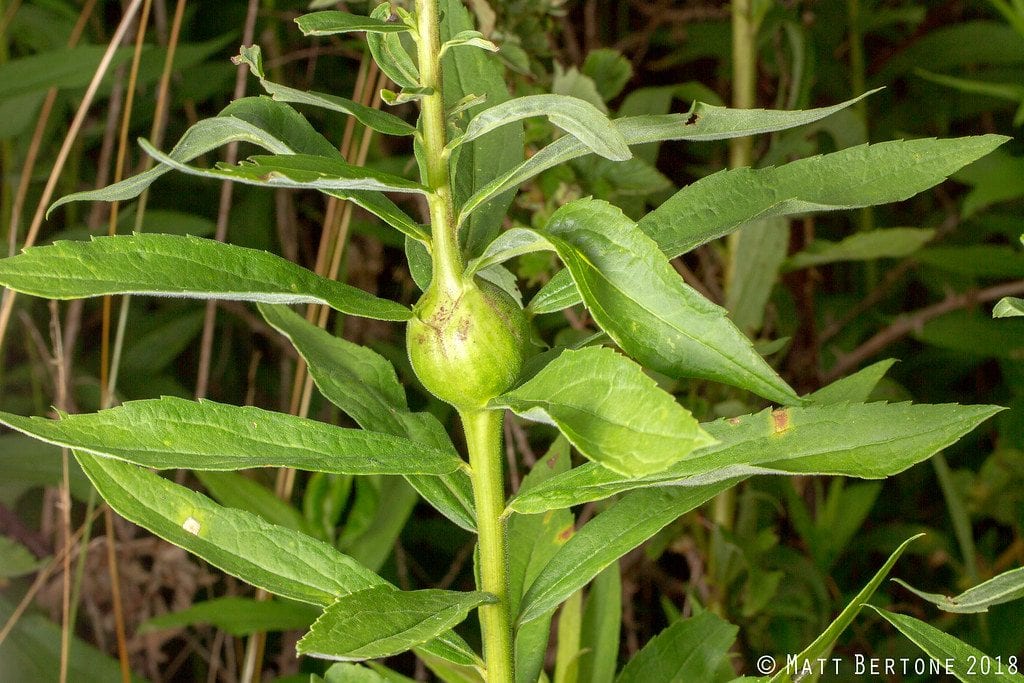
By altering growth patterns, galls contribute to the ever changing variety of plant structures. We should appreciate these “irregularities” as one of the contributors to our evolving natural world.
